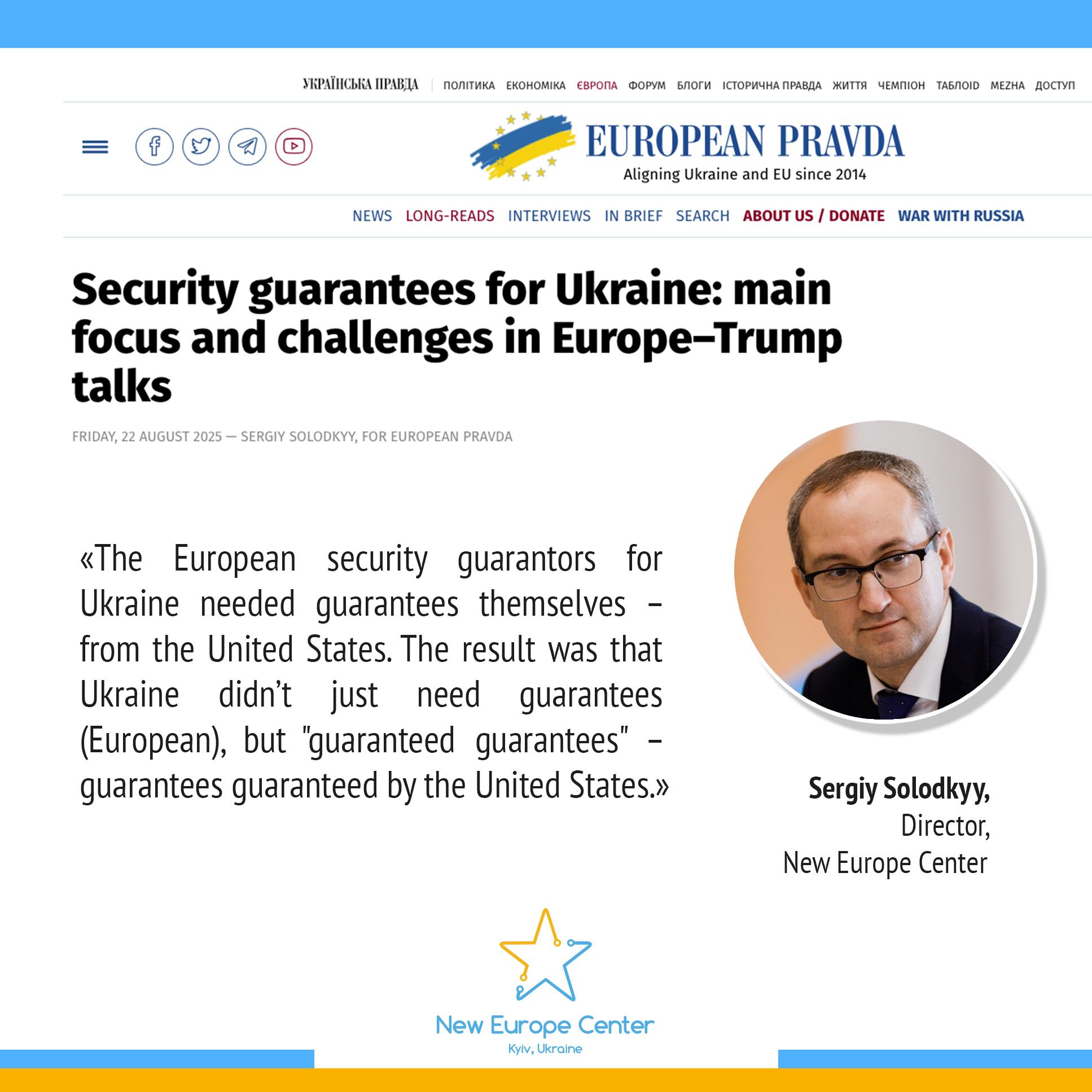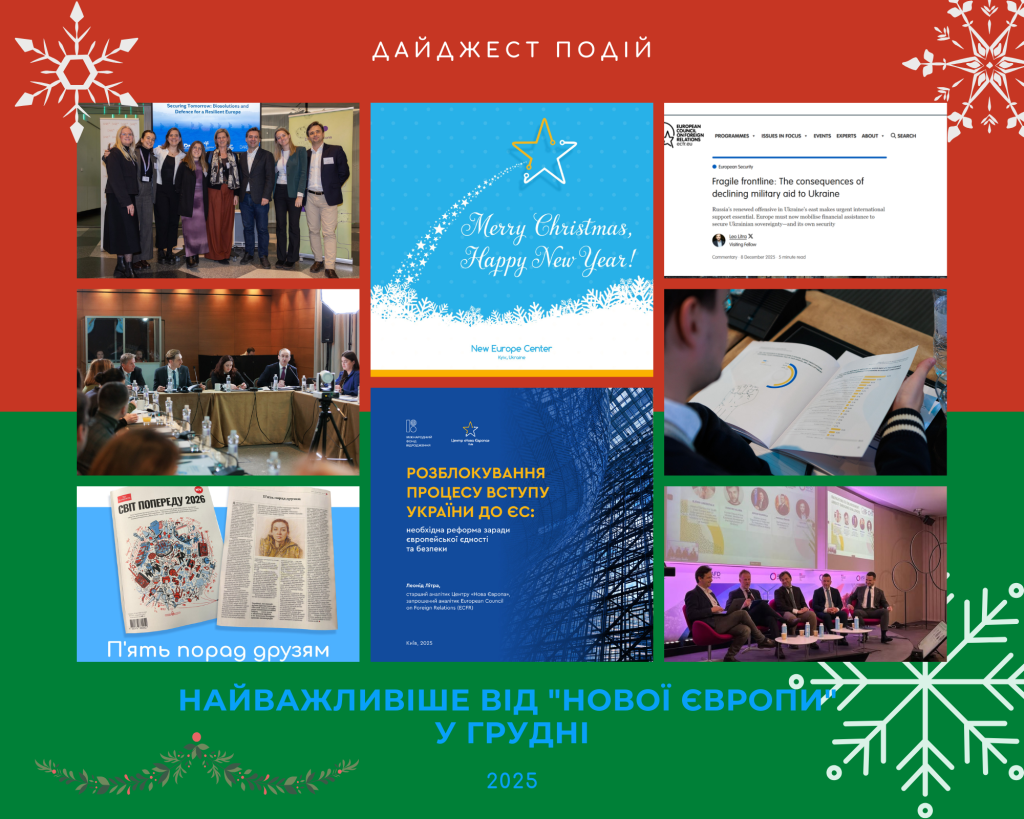
The media version was kindly published by European Pravda.
A process Ukraine has long been waiting for has finally been launched: international consultations on security guarantees.
The idea gained momentum after it received the United States’ blessing during a multilateral meeting with European leaders in Washington, at which the US promised the European leaders transatlantic support.
A lot of time had been wasted.
An initiative by French President Emmanuel Macron to potentially send Western troops to Ukraine can be considered the starting point of the discussions on security guarantees.
That was back in February 2024. At the time, however, the idea did not gain broad support. Even in Kyiv there was little initiative to endorse it. The Ukrainian authorities preferred quiet diplomacy on this matter, not least because Macron’s initiative was not well received in the United States.
The new US president could have given this initiative a boost, but the opposite happened. The Coalition of the Willing spearheaded by France and the United Kingdom negotiated its potential content, but without much urgency or scope, leading many observers to say the process was stalling.
The need to involve a Western contingent for effective postwar security guarantees, which was obvious to Ukrainians and also became clear to their European partners, turned out to be far less obvious to Washington, without whose support the initiative had little chance of succeeding.
And no matter how bold the Coalition of the Willing might have been, the security guarantees it provided would have looked unconvincing to Russia without US involvement.
Repetitive though it may sound, the European security guarantors for Ukraine needed guarantees themselves – from the United States. The result was that Ukraine didn’t just need guarantees (European), but “guaranteed guarantees” – guarantees guaranteed by the United States.
Why can’t Europe ensure effective guarantees on its own?
Europeans openly admit that they don’t have the capacity to realise their ambitions – from the number of soldiers in European armies to intelligence sharing capabilities.
Moreover, some Coalition of the Willing countries were unwilling to join if the format was perceived as “anti-American”.
So European politicians worked hard to try to persuade Washington to rethink its approach.
A year ago, when calls for negotiations with Russia were growing louder, the New Europe Center drafted an analytical paper entitled “Security Matrix of Ukraine“.
Our key conclusion was that whatever the path to ending the war may look like, for Ukraine it must lie through security guarantees. This had to be a fundamental precondition for Kyiv in any diplomatic scenario for ending or even suspending the war.
Later, our Center commissioned an opinion poll, which confirmed that this was not merely an analytical conclusion but also what the public demands: negotiations with the Russians make no sense without security guarantees. 64% of Ukrainians responded that there is no point negotiating with Putin unless Ukraine receives real security guarantees from the West. Their argument was simple: otherwise, Russia would resume the war after a short break.
Credit where credit is due: the Ukrainian leadership adopted this approach immediately.
Unfortunately, the US has only just realised how important it is.
This difference in vision was one of the main reasons for the notorious clash between Volodymyr Zelenskyy and Donald Trump during the Oval Office meeting on 28 February. The Ukrainian leader was emphasising the priority of security guarantees, while the American president only wanted to hear the word “ceasefire”.
Nearly six months later, as we can see, the US president has done nearly a complete 180.
Now, for Trump, a ceasefire is no longer on the agenda; instead, the US has agreed on the need to work out security guarantees.
But let’s add a dose of realism.
Of course, there is no reason to believe that the process of developing security guarantees will be successful in the near future, still less that Russia would agree to any guarantees designed and put forward by the Coalition of the Willing.
But there is another reality that the US leadership will eventually have to accept. They must recognise that Ukraine and the Coalition of the Willing must work on implementing their goals – sometimes regardless of how complex and lengthy the path may be. And it would be entirely justified if the Coalition of the Willing were prepared to launch different stages of its mission even before a ceasefire is reached, which could help convince Russia that Ukraine’s allies are serious.
For now, the bitter reality is that the United States is not particularly eager to participate in initiatives in support of Ukraine.
The commercialisation of US foreign policy is a decisive factor in its decision-making.
Yet the fact that the US has agreed to coordinate the working out of guarantees is still a major step forward. From here on, much will depend on the arguments advanced by Europe’s experienced military leaders and diplomats.
In this sense, another earlier contribution by New Europe may prove useful. It was published two years ago, when the Center’s analytical team analysed the lessons learned from security models in other countries. At the time, the Israeli, South Korean, West German and Taiwanese models were the most extensively discussed.
It is still important today that these lessons are not forgotten. Here they are.
It is essential to take both the positive and negative elements of these experiences into account.
- All these security models are “tied” to the US, even though Washington initially agreed to them right away.
Most of the cases analysed show that it takes time and extraordinary diplomatic effort to convince Washington to implement models that today, decades after they were launched, appear entirely natural or even initiated by Washington itself.
- Strategic uncertainty.
From the Taiwan model, it would be worth borrowing the element of “strategic uncertainty”, which would prevent Moscow from clearly understanding the extent to which the Coalition of the Willing is ready to help defend Ukraine.
- Moscow was always against it, but fear did not restrain Washington.
This is not the first time that Russia has attempted to impose its vision on others. Many security models throughout history have been implemented in the face of strong opposition from the Kremlin. However, Washington and other Western capitals have never lacked the courage to implement their vision and decisive policies.
- Currently, Ukraine is being offered “incomplete” models.
Even when Western politicians, diplomats or experts try to use historical analogies and discuss one of these models as the most relevant for Ukraine (and even as an alternative to NATO), they usually propose a “modified version” of that model. Each modification tends to result in a “truncated version” of a model that has worked elsewhere in the world.
- Own army and defence industry.
Countries with US guarantees did not stop focusing on building their own armies and/or defence industries, despite having US security guarantees (as in the case of South Korea), the de facto allied nature of security cooperation (Israel and Taiwan), or even NATO membership (as with West Germany). This was often thanks to US financial support, as well as economic development, which coincided with improvements in their security situation.
- Cost matters.
When introducing or refining each security model, the US (and its allies) also considered financial factors such as how costly the model would be and ways to optimise costs without reducing effectiveness.
In Ukraine’s case, Western partners already know the answer to the question of cost-effectiveness: the optimal model to guarantee Ukrainian security would be NATO membership.
The main conclusion of our research, however, is that most of the models analysed did not emerge fully-formed as we know them today. They were mostly modified and evolved over time. They developed gradually.
For example, in South Korea, the main mutual defence treaty was signed during the 1953 armistice, but the agreement on the status of US troops was not signed until 1966. US tactical nuclear weapons were deployed in 1957 but withdrawn from the peninsula in 1991.
In the case of Israel, the most valuable practical element for us – the memoranda on long-term US support that were decades in the making – only appeared in 1999.
The Taiwan model is an example of continuous adaptation. It is regularly updated to meet the requirements of deterring China.
In this sense, it is important to understand that what seems impossible today may become feasible later. The involvement of Finnish President Alexander Stubb in negotiations with Donald Trump regarding security guarantees is a symbolic illustration of this, as Stubb is the leader of a neutral country that eventually joined NATO. Therefore, whatever security guarantees are proposed, it should not be forgotten that they may be temporary.
Moreover, the past six months have shown how swiftly Trump can adjust his position. And his current view of Ukraine joining NATO could undergo similar adjustments.







